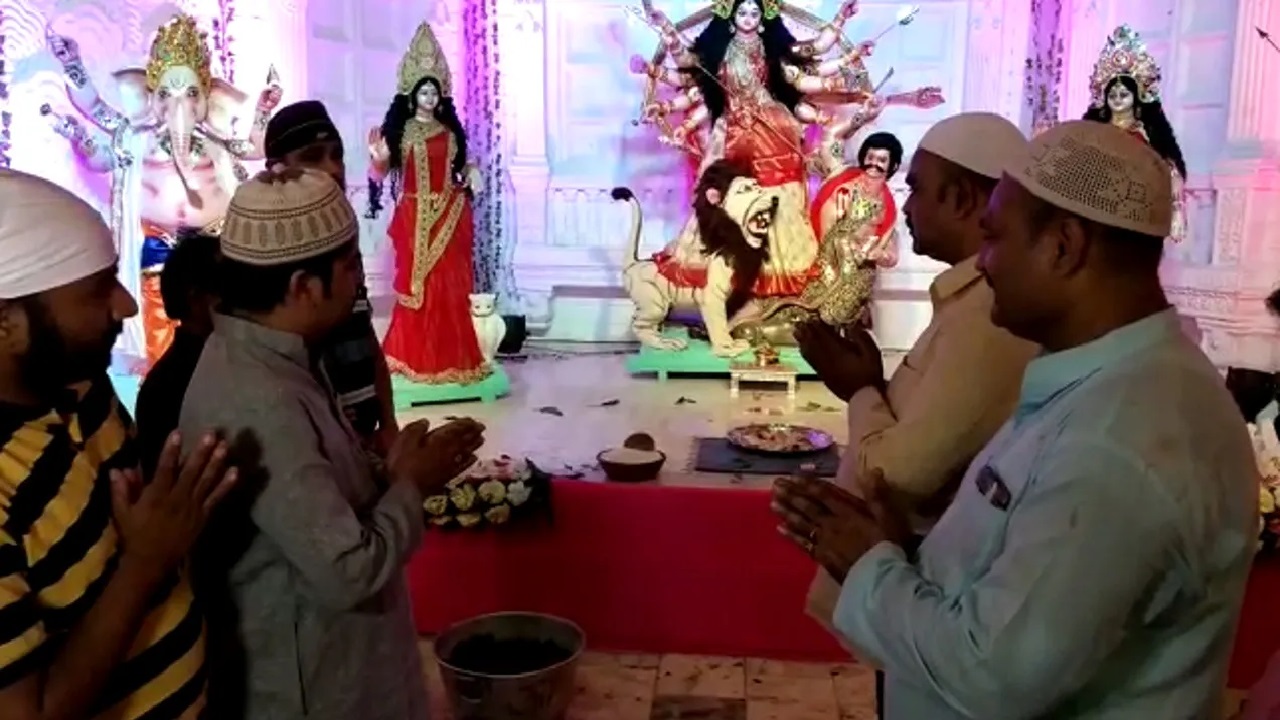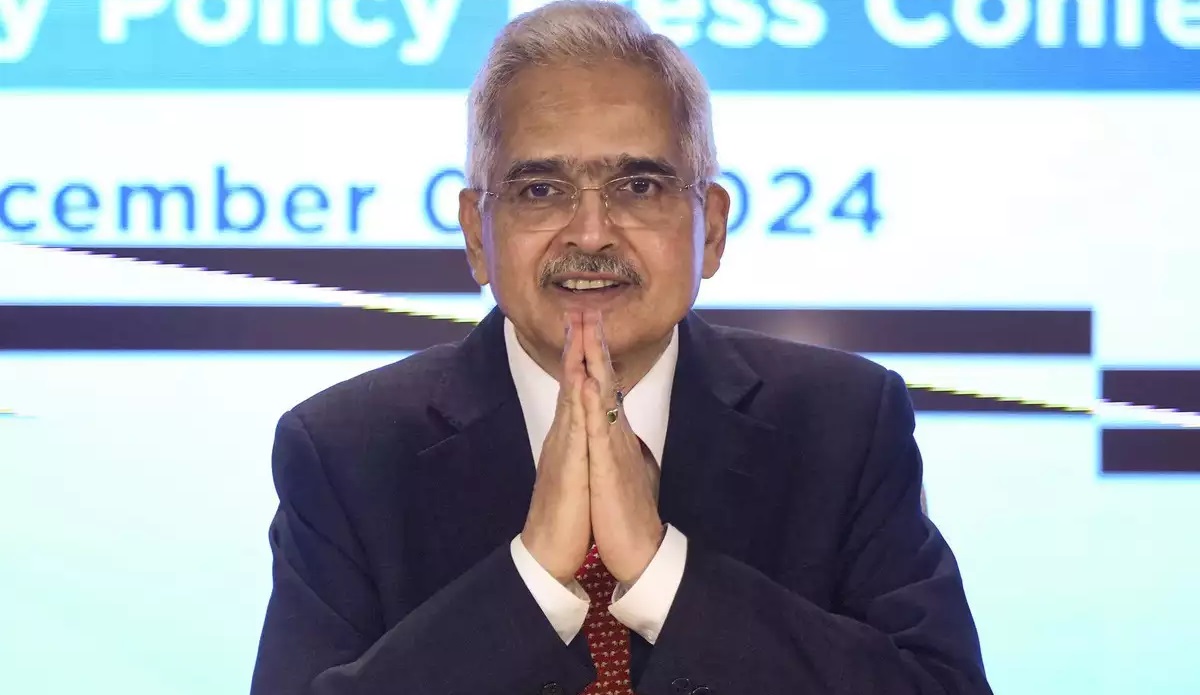
In a world often divided along religious lines, the village of Manikagada in Odisha offers a heartwarming example of unity and coexistence. Nestled in the Khurda district, near the border of Nayagarh, this small village has maintained a remarkable tradition of communal harmony for over three centuries. The annual Durga Puja celebrations here are not just a religious festival; they are a testament to the enduring relationship between the Hindu and Muslim communities.
At the heart of this celebration is a Muslim family, led by Sheikh Ajijur Rehman, who has played a central role in organizing the Durga Puja for generations. This unique tradition of communal unity stands in sharp contrast to the religious discord often seen in other parts of the world.
A 300-Year-Old Tradition of Unity
For over 300 years, the people of Manikagada have come together to celebrate Durga Puja, with both Hindu and Muslim communities playing essential roles. In this village, while Muslims do not directly partake in the religious rites of worshipping Goddess Durga, they have significant responsibilities in key rituals.
One of the most remarkable aspects of this celebration is that Sheikh Ajijur Rehman’s family not only bears the financial burden of organizing the Durga Puja but also plays an active role in performing essential rituals. Ajijur, who has been honored with the title of Dalabehera (team leader), is responsible for performing a sacred havan on Dasami, the tenth day of Navratri, marking the conclusion of the festival.
Ajijur’s family has been carrying this responsibility for generations. After the passing of his father, Sheikh Mojibur Rehman, and his grandfather, Sheikh Habibur Rehman, Ajijur stepped into the role of the karta, leading the rituals of the havan. His commitment to maintaining this age-old tradition is a reflection of the deep-rooted respect between the two religious communities in Manikagada.
How It All Began: The Legend Behind the Puja
The history of Manikagada’s Durga Puja is intertwined with a legend that dates back to the 18th century. According to local lore, Birabar Dev, the younger brother of the Puri Gajapati (king), fled to the Ranpur kingdom to escape an assassination plot by his elder brother. Birabar took refuge with the Ranpur king, who assigned him the region of Manibandha to govern.
Birabar’s story took a significant turn when he met and married an Adivasi Kandha woman named Manika, who later became the source of the village’s name. The marriage also led Birabar to become a devotee of the tribal deity, Goddess Bhuyan, later named Goddess Manika Bhuyan in honor of his wife’s sacrifice.
As Birabar settled in Manikagada, he entrusted the governance of his kingdom to his Muslim lieutenant, Sheikh Manuar, and instructed him to continue the tradition of Dussehra celebrations. Since then, Sheikh Manuar’s descendants have upheld the tradition of organizing Durga Puja in the village, passing it down through generations.
The Role of the Dalabehera in the Durga Puja
In Manikagada, the title of Dalabehera holds great significance during Durga Puja. The Dalabehera plays a crucial role in the Aparajita Puja, performed during the final days of the festival. Ajijur, as the current Dalabehera, performs the rituals dressed in traditional Hindu attire, symbolizing the unity between the two communities.
One of the most important aspects of the Puja is the wearing of a ring made from doob grass, which is placed on Ajijur’s finger by a Hindu priest. This symbolic gesture represents the deep connection between the two religious’ groups. Ajijur is accompanied by a Hindu from the Kayastha family, who holds a palm leaf manuscript, and another Hindu carrying a sword, which was a gift from the Ranpur king to the Dalabehera.
The involvement of the Dalabehera in the Durga Puja rituals dates back to the 18th century when the Ranpur king officially passed on the responsibility of organizing the festival to Sheikh Manuar, a Muslim, setting a remarkable precedent for communal harmony.
The Unique Puja Rituals of Manikagada
The Durga Puja celebrations in Manikagada are not only known for their religious significance but also for their unique customs. The festival begins on the day of Saptami and continues for four days, with rituals steeped in tradition.
One of the highlights is the Sohala Puja, which is performed before the commencement of the Dussehra festivities. The Chhatri (umbrella) of Goddess Manika Bhuyan, worshipped by the Kandha community, and the Katari (dagger) of Mahisasuri, worshipped by the Dumal Gaudas, are placed together as part of the ritual. The Khandayat paikas (warriors) also cleanse their traditional weapons and place them in the village’s Akhadaghar until Dashami.
On Vijaya Dashami, martial arts demonstrations with swords, sticks, and knives are performed by the paikas. The festival concludes with a grand procession through the village, during which both Hindus and Muslims march together, accompanied by traditional drumming and music.
At the heart of this procession is the Jani, the leader of the Kandha community, who becomes “possessed” by Goddess Manika Bhuyan and performs prayers for the welfare of all. This communal display of unity culminates in the Muslim Dalabehera welcoming the Goddess to his home and performing the final rituals of the festival.
Challenges and Future of the Tradition
Despite the long-standing tradition, the Rehman family faces challenges in organizing the Durga Puja. Sheikh Ajijur Rehman, who has been leading the celebrations for the last three years, admits that financial constraints make it difficult to maintain the grandeur of the festival.
“Though we bear all the expenses of the Puja, no one comes forward to extend a helping hand,” Ajijur says. The family has appealed to the district administration for support to preserve this unique tradition, but their requests have largely gone unheard.
Ajijur’s uncle, Nisar Ali Khan, echoes the sentiment, emphasizing the role the festival plays in uniting people of different faiths. “In our village, we give importance to all festivals, whether it is Dussehra or Eid. This tradition has kept us united, and despite the financial burden, we cannot let it die.”
A Symbol of Communal Harmony
Manikagada’s Durga Puja stands as a shining example of communal harmony, where religious differences are set aside for the greater good. The involvement of a Muslim family in organizing one of the most significant Hindu festivals is a powerful message of unity, especially in today’s divided world. The 300-year-old tradition of the Rehman family leading the celebrations continues to inspire not only the villagers of Manikagada but also those who believe in the possibility of peaceful coexistence.
(With inputs from agencies)







